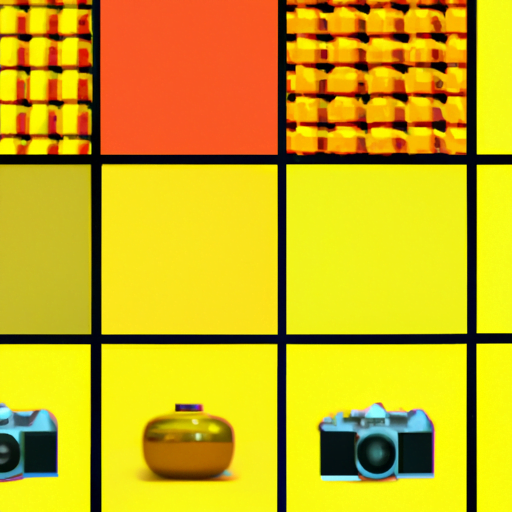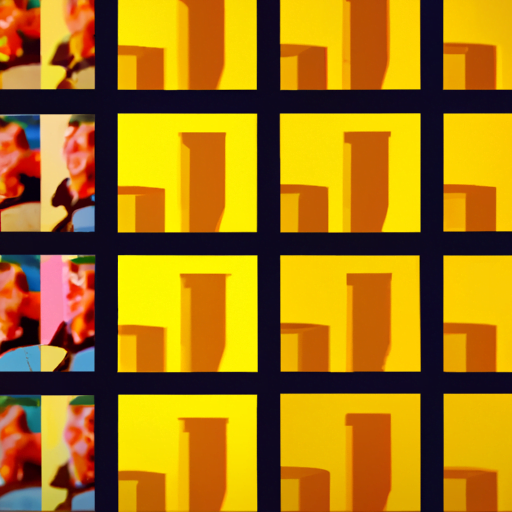
-
Table of Contents
- The Art of Visual Repetition: Creating Patterns and Motifs
- Introduction
- The Power of Repetition
- Creating Patterns and Motifs
- 1. Selecting Elements
- 2. Arranging Elements
- 3. Varying the Repetition
- Examples of Visual Repetition in Art
- 1. Islamic Geometric Patterns
- 2. Pop Art by Andy Warhol
- 3. Op Art by Bridget Riley
- The Impact of Visual Repetition
- 1. Visual Cohesion
- 2. Emphasis and Focal Points
- 3. Emotional Impact
- Conclusion
The Art of Visual Repetition: Creating Patterns and Motifs

Introduction
Visual repetition is a powerful technique used in various art forms to create patterns and motifs that captivate the viewer’s attention. Whether it’s in painting, graphic design, architecture, or even fashion, the deliberate use of repetition can evoke emotions, convey messages, and establish a sense of harmony. In this article, we will explore the art of visual repetition, its significance, and how it can be effectively utilized to create compelling and visually appealing compositions.
The Power of Repetition
Repetition is a fundamental principle in art and design. It allows artists to create a sense of rhythm, balance, and unity within their work. By repeating visual elements such as shapes, colors, lines, or textures, artists can establish a visual language that guides the viewer’s eye and creates a cohesive composition.
One of the key benefits of repetition is its ability to create a sense of familiarity and recognition. When viewers encounter repeated elements, they subconsciously associate them with a pattern or motif, which can evoke feelings of comfort, stability, and order. This psychological response to repetition is deeply ingrained in human perception and can be harnessed by artists to convey specific messages or emotions.
Creating Patterns and Motifs
Patterns and motifs are the result of intentional repetition. They can be found in various art forms, from traditional textile designs to contemporary digital illustrations. Creating visually appealing patterns and motifs requires careful consideration of the elements being repeated and their arrangement.
1. Selecting Elements
The first step in creating patterns and motifs is selecting the visual elements to be repeated. These elements can include shapes, colors, lines, textures, or even specific objects. The choice of elements should be guided by the desired aesthetic, theme, or message of the artwork.
For example, a floral pattern may consist of repeated flower shapes, while a geometric motif may involve repeating lines and angles. The selection of elements should be based on their visual appeal and their ability to convey the intended meaning or mood.
2. Arranging Elements
Once the elements are chosen, the next step is to arrange them in a visually pleasing and harmonious way. The arrangement can follow various principles, such as symmetry, asymmetry, or radial symmetry, depending on the desired effect.
For instance, a symmetrical arrangement of elements can create a sense of order and stability, while an asymmetrical arrangement can add dynamism and interest. Radial symmetry, on the other hand, can create a focal point and draw the viewer’s attention towards the center of the composition.
3. Varying the Repetition
While repetition is the core principle behind creating patterns and motifs, it is important to introduce variations to avoid monotony. Varying the repetition can be achieved by altering the size, orientation, color, or spacing of the repeated elements.
For example, in a pattern of circles, varying the size and color of the circles can add visual interest and depth. Similarly, in a motif of repeated lines, changing the thickness or angle of the lines can create a sense of movement and rhythm.
Examples of Visual Repetition in Art
Visual repetition can be observed in various art forms throughout history. Let’s explore some notable examples:
1. Islamic Geometric Patterns
Islamic art is renowned for its intricate geometric patterns, which are created through the repetition of simple geometric shapes such as squares, circles, and stars. These patterns adorn mosques, palaces, and manuscripts, and are often symbolic representations of the infinite nature of God.
2. Pop Art by Andy Warhol
Andy Warhol, a prominent figure in the pop art movement, utilized repetition as a central theme in his artwork. His iconic screen prints of celebrities, such as Marilyn Monroe and Elvis Presley, feature repeated images that reflect the mass production and consumer culture of the time.
3. Op Art by Bridget Riley
Bridget Riley, a British artist associated with the Op Art movement, explored the optical effects of visual repetition. Her paintings consist of repeated geometric patterns that create illusions of movement and depth, captivating the viewer’s perception.
The Impact of Visual Repetition
The deliberate use of visual repetition can have a profound impact on the viewer. Here are some key effects:
1. Visual Cohesion
Repetition creates a sense of unity and coherence within an artwork. It allows the viewer to perceive the various elements as part of a whole, resulting in a visually pleasing composition. This cohesion can be achieved through the repetition of colors, shapes, or patterns.
2. Emphasis and Focal Points
Repetition can be used to draw attention to specific areas or objects within an artwork. By repeating certain elements, artists can create focal points that guide the viewer’s gaze and highlight important aspects of the composition.
3. Emotional Impact
Repetition can evoke specific emotions or moods in the viewer. For example, a pattern of soft, flowing lines may create a sense of calmness and tranquility, while a pattern of sharp, jagged shapes may evoke tension or unease. The choice of repeated elements and their arrangement can greatly influence the emotional response of the viewer.
Conclusion
The art of visual repetition is a powerful tool that artists and designers can utilize to create captivating patterns and motifs. By carefully selecting and arranging repeated elements, artists can establish a visual language that communicates messages, evokes emotions, and creates a sense of harmony. Whether it’s in traditional art forms or contemporary design, the deliberate use of repetition can greatly enhance the impact and appeal of an artwork. So, next time you encounter a visually striking pattern or motif, take a moment to appreciate the artistry behind the repetition.
